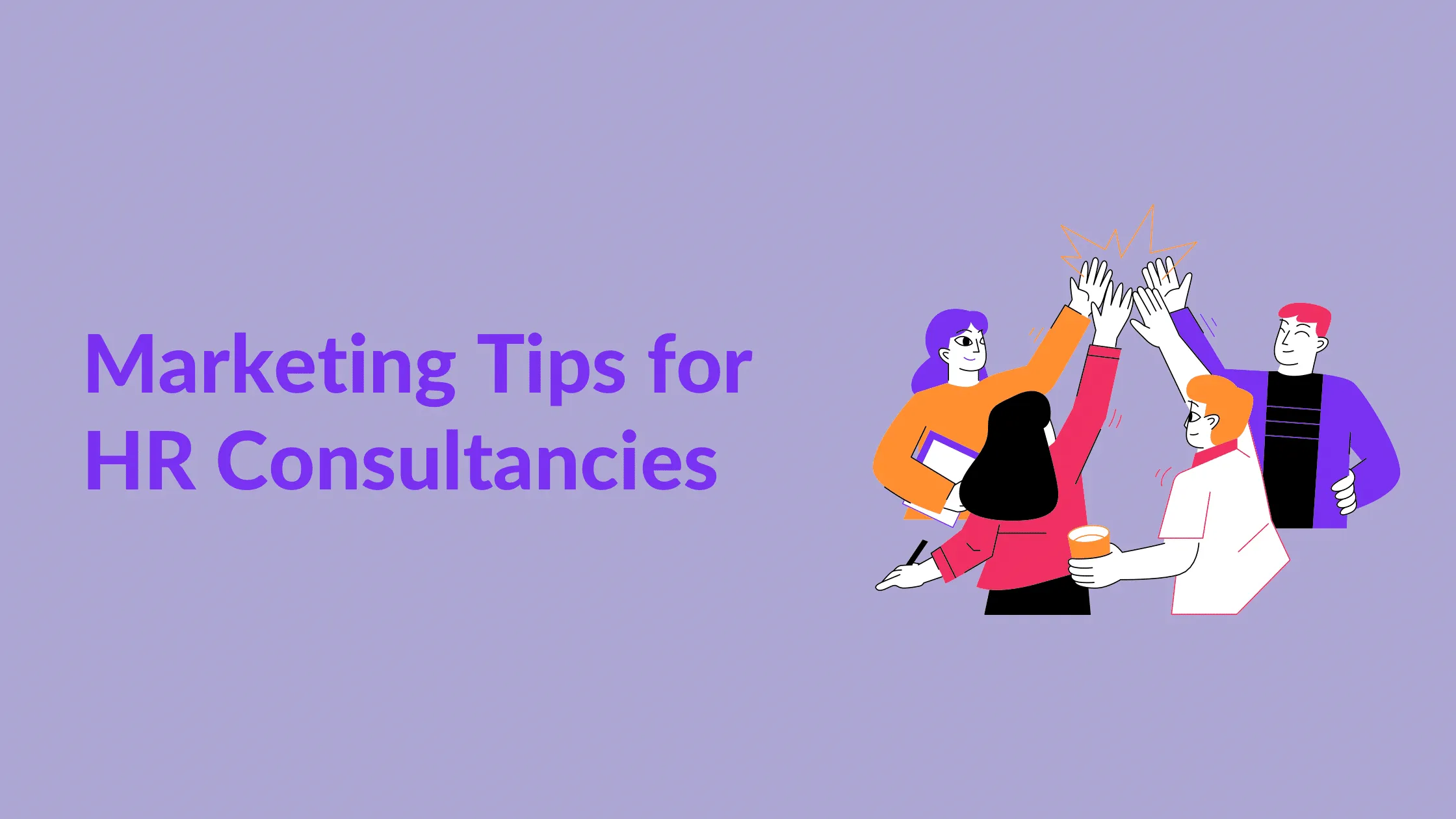The trend in marketing is towards digital marketing. Nowadays, most people keep in touch online instead of using traditional media such as radio and television.
Digital marketing encompasses emails, websites, and social media, being geared for internet searches with SEO (search engine optimisation) and is user-friendly for mobile phones.
If you follow the tips below, you will be where your clients are, on the right platforms that they frequent.
Marketing today requires a business or consultancy to connect with consumers that fit their target market profile. It is about building relationships, gaining trust, and providing useful content using the most appropriate media and timing.
Content needs to show that your business answers a need that prospective clients have.
Whether your aim is to increase brand awareness, get leads, make sales, or increase client retention, or of these, this guide will give you the knowledge you need to achieve your goals.
Regardless of your marketing budget or how big or small your consultancy is, doing the right things effectively will enable you to reach your targets.
How Do You Design a Winning Website for Your Consultancy?
Your website does have to look professional and eye-catching to wow prospective clients. But it will take far more than good looks to convert searches into sales.
Your content needs to provide compelling reading without being cluttered and to have its call-to-action correctly placed to be effective and achieve its purpose.
Your first priority is conversion. Secondly, you need to introduce users to your services and indicate what makes you unique among all other Human Resource consultancies.
Then, you will need a content management system to create your website and keep it up to date. Also, your customers must clearly see the benefits your service will give them, as opposed to discussing the features; the former has a higher conversion rate.
Perhaps most importantly, you need to make sure your website traffic will be converted into clients that purchase your services.
After all, there is no value in attracting people to simply browse through your website pages without signing up. Your website also needs to display your services so that clients know what you do and can allow you to work for them.
Lastly, you must only use original, professional images that are specific to your site.
WordPress is a free web creation tool. It will produce professional results. Additionally, it is super easy for even beginners to use.
Marketing Tips for HR Consultancies
1. Provide Content of a High Quality
The aim of content marketing is to increase the engagement that users have with your website. It also has a higher ranking in terms of search engine optimisation (SEO) – we will discuss this a bit later in more detail – leading more people using the search function on your site.
You need to decide on the type of content you want to use. Make sure it is appropriate for the audiences you aim to attract. Here are some of the better-known, more popular content types:
- Podcasts
- Blog posts
- Tutorials
- Emails
- Landing pages
- Social media content
- Infographics
- Press releases
- Guides
- White papers
- E-Books
- Case studies
- Webinars
- Video content
- Articles
Blog posts and articles are amongst the most useful types of content for Human Resources consultancies to use. Great content engages your readers by providing useful information. For example, you can do a blog post on how to manage staff which will attract clients and show your expertise. Infographics are another content type that renders statistics easier to grasp and make an impact.
2. Social Media Advertising
Allocate a portion of your marketing budget to paid advertisements on social media. This will complement your other strategies, reach a wider audience, increase engagement, increase website traffic, and boost your sales.
Start by writing down the goals of your marketing campaign. This could be to get leads, raise brand awareness, get more web traffic, etc. This will keep you focused so that you do not go off on a tangent that serves no purpose to realise your aims.
Create a buyer persona that helps to flesh out your target audience. This enables you to identify the pain points your ideal client has that you can provide a solution for. Note that your service is the answer for the persona you detect. You do not make a profile until you know exactly who will use your services. That is your buyer persona. Your marketing messages will all be designed to target the audience you need to reach.
3. Social Media Influencers
Influencers can do a lot to boost your sales, and you will pay them accordingly. You must, therefore, include this in your marketing budget. You can find influencers with an online tool that is completely free.
You can do the search by how many Facebook likes or Instagram followers they have, the average of the monthly visits their profile attracts, or according to category. It is not difficult to find a relevant influencer so this can be done rapidly so that you can focus on the other aspects of your marketing campaign.
4. Webinars
Webinars are an excellent way in real-time to engage your audience, provide interesting and useful content, and interact directly. It is worth including in your marketing campaign. Some companies do demonstrations of their products, which can be a bit harder to do with services, but you can show them your systems and how easy they are to use. This will encourage clients to purchase your service offering when comparing it to their outdated or manual systems.
The frequently answered questions of your clients on your website, as well as those on your competitor’s sites, will give you some ideas on the information clients need to go ahead with a purchase. Check your blogs to see which ones clients engaged the most with to glean the topics that interest them the most. Run polls or surveys; these are easy to set up and will help you to understand what topics clients want to know more about.
5. Pay-Per-Click (PPC) Campaigns
Pay-Per-Click (PPC) Campaigns are a rapid means of getting traffic to click on your website. This will certainly boost your consultancy’s brand awareness. Even if you have just opened your consultancy, a PPC campaign will get you multiple clicks.
The advertisements you use for PPC must be well thought out. See what keywords your competitors utilise and decide which ones will work best for you and differentiate between you and them. Design two versions of your advertisements and see which one has the better response, then focus on that one.
Retargeting is a special strategy where you do not aim for new consumers but instead focus on those who responded to your previous advertisements with comments, listened to your podcasts, or showed an interest in your services and company. This group will have a greater tendency to click on your advertisements.
6. Use Content Marketing and SEO Together
SEO initially involved using keywords that made it more likely for potential clients to find your website when they performed a Google search. That is why it is called search engine optimisation . But Google upgraded their algorithm to let sites with more relevant and useful information and better engagement be ranked higher than those with irrelevant content that does not promote audience involvement. So, it makes sense to combine content marketing with your SEO strategies.
With SEO, you want to focus on the most frequently asked questions that consumers will type into the search bar. With content marketing, the focus is on your answers to those questions. Pairing these separate strategies is proving effective for the companies that are doing it.
If you want to compete, you need to understand that all companies are focusing on a greater quantity and better-quality content. This means that you will have to outperform them on these elements. Consumers are bombarded with so much information that it gets harder for a marketing message to be heard.
For an acceptable return on your marketing investment (ROI – return on investment), it has been shown that you need to post weekly content, at a minimum. When you drop below this, so does your ROI. Remember to pay attention to both quantity and quality.
Content must be appropriate, original, and valuable. Appropriate content needs to match the marketing conversion stages . Identifying the stage a consumer is at can be difficult, therefore it is vital that you excel at coding your content. You will do this with tracking codes that tell you what content brought a visitor to your website and previous sites they have visited. Then you can make an informed assumption about the type of content they respond to. If you provide the desired content at the appropriate time, you will reap the rewards of more conversions.
Original content means that you must not borrow from your competitors. You need to speak as an expert in your field. You can employ videos or audio tracks. If you struggle to create content that captures attention, you can hire an agency to do it for you. This content can be placed on social media or your website.
Valuable content informs, is entertaining, and resonates with visitors to your site. It is the answer to the Frequently Asked Questions (FAQs) and matches the search terms the person used. At the same time, for it to be effective, it needs to increase engagement. Examples of engagement are comments, subscribing to your email messages, and spending time on your pages.
These aspects will drive your ROI. In fact, to increase ROI, you need to increase the number of visitors to your website. This is the reason why you need a pronged marketing campaign that uses social media, your website content, and influencers. You should make sure you have links for the content you post that visitors may decide to share on their accounts or profiles.
7. Mobile Browsing
The proportion of people who only use their mobile phones to go online is increasing in comparison to those who use desktops, tablets, or laptops. It is essential that your website has been designed for mobile users too. Your website should not have delays in loading when using a mobile device. The appearance must also be of great quality and user-friendly.
Marketers aim to encourage evermore traffic to their websites. This results in studies being done on which colours, fonts, and type sizes get the best response from visitors using mobiles. Stay abreast of such research as it will keep you in the lead.
You need to test loading times often. People are constantly testing which fonts, colours, and font sizes, for example, are best for reading on a variety of small mobile screens. So make sure to optimize your website to be fast-loading and mobile-friendly.
This guide will soon have you extending your reach and boosting your return on investment.
Loading comments...

